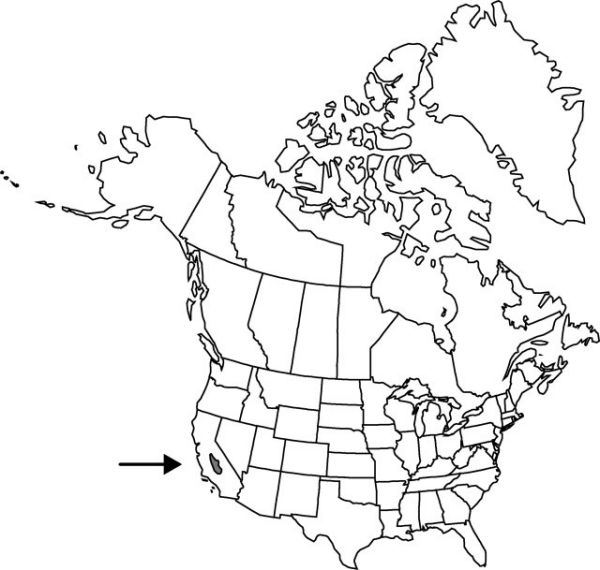Allium abramsii
Aliso 13: 417. 1992.
Bulbs 1–3, not clustered on stout, primary rhizome, ovoid to globose, 1–1.5 × 1–1.5 cm; outer coats enclosing 1 or more bulbs, gray to dark brown, membranous, lacking cellular reticulation or cells arranged in only 2–3 rows distal to roots, ± quadrate, without fibers; inner coats white, cells obscure, quadrate. Leaves persistent, withering from tip by anthesis, 1, basally sheathing, sheath not extending much above soil surface; blade solid, terete, 12–30 cm × 1–3.5 mm. Scape persistent, solitary, erect, solid, terete, 6–15 cm × 1–3 mm. Umbel persistent, erect, compact, 10–45-flowered, hemispheric, bulbils unknown; spathe bracts persistent, 2–3, 3–5-veined, lanceolate, ± equal, apex acuminate. Flowers campanulate to urceolate, 8–15 mm; tepals erect, rose-purple, linear to lanceolate, unequal, becoming rigid and ± keeled in fruit, apex acute, ± spreading-reflexed at tip, inner tepals slightly shorter and wider than outer, outer margins denticulate on distal 1/4, inner margins denticulate to erose and crisped throughout; stamens included; anthers yellow; pollen yellow; ovary crested; processes 6, prominent, ± triangular, margins entire; style linear, equaling stamens; stigma capitate, 3-lobed, lobes slender, recurved; pedicel 4–12 mm. Seed coat dull or shining; cells minutely roughened. 2n = 14.
Phenology: Flowering May–Jul.
Habitat: Granite sands in open coniferous forest
Elevation: 1400–2000 m
Discussion
Allium abramsii is known only from the central Sierra Nevada.
Selected References
None.
